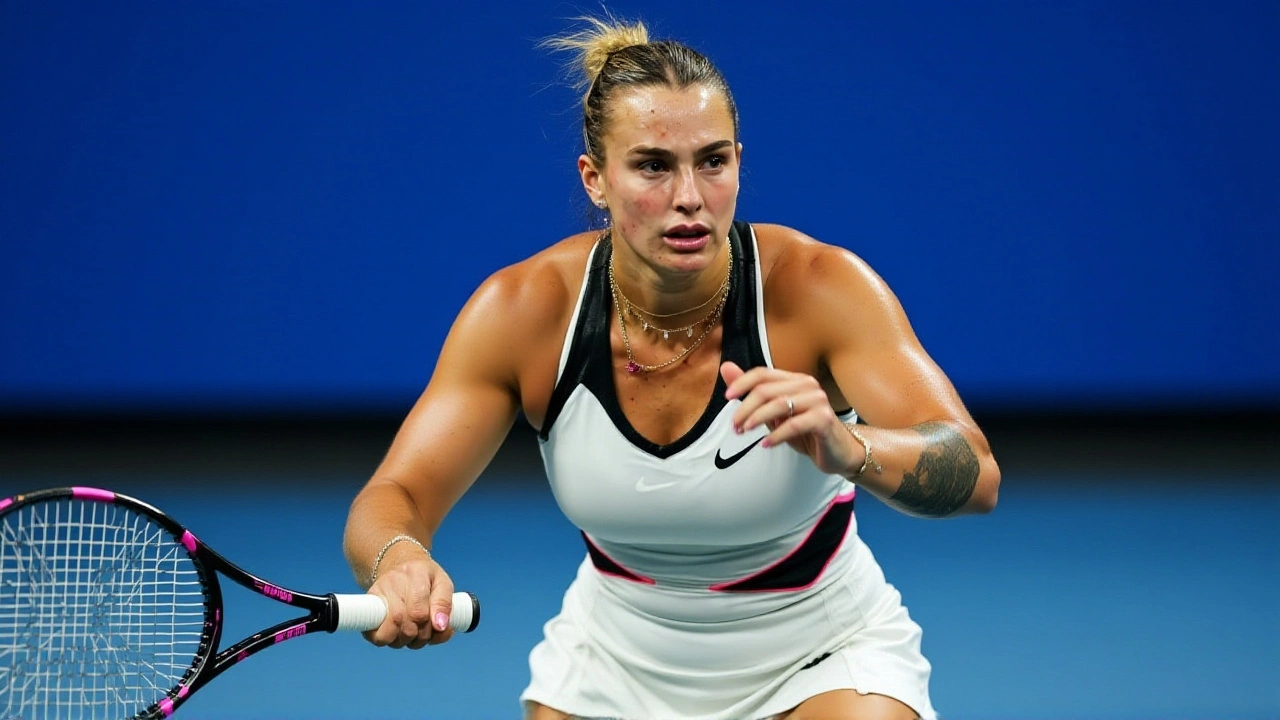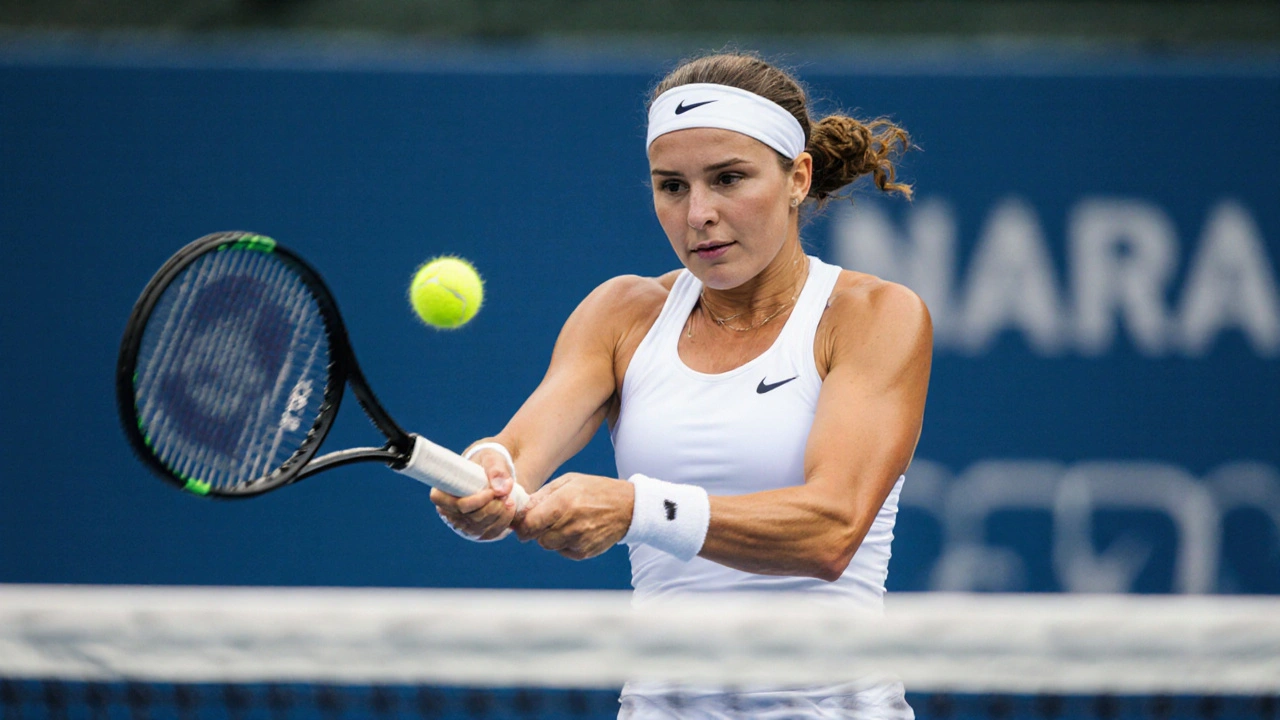Aryna Sabalenka Defends US Open Crown, Becomes First to Repeat Since 2014

When Aryna Sabalenka, the World No. 1 from Belarus, lifted the trophy at the 2025 US OpenUSTA Billie Jean King National Tennis Center on September 6, she made history by defending her title – a feat not seen since Serena Williams in 2014.
Why this win matters
The final, staged in Flushing Meadows, New York, pitted Sabalenka against 23‑year‑old American Amanda Anisimova. A 6‑3, 7‑6 (7‑3) victory gave Sabalenka her fourth Grand Slam crown, all on hard courts, and marked her 100th major‑match win. The win also cemented her lead in the Women's Tennis Association rankings released on October 1, 2025, where she sits comfortably ahead of Poland’s Iga Świątek (No. 2) and America’s Coco Gauff (No. 3).
Match breakdown: power, poise and a tiebreak thriller
Sabalenka’s game plan was simple – use her booming serve to push Anisimova deep, then finish points at the baseline. She rattled off 13 winners but also logged 15 unforced errors, a trade‑off that paid off when she seized the first set 6‑3. The second set turned into a nerve‑wracking duel. Anisimova broke Sabalenka’s serve at 5‑4, threatening to swing momentum. Yet the Belarusian, who entered 2025 with a 20‑1 record in tiebreaks, regrouped and stormed the tiebreak 7‑3, sealing the match.
Player reactions and celebration plans
During the trophy ceremony at Arthur Ashe Stadium – the iconic venue within the same complex – Sabalenka thanked her coaching crew, saying, “I mean it’s been tough this year with those finals. I was really terrible towards you, but come on. Worth it, right? Thank you so much. I love you. You’re my family.” She then told US Open media that she intended to “have some drinks at the bar on site to start my celebration” because, in her own words, “you have to enjoy it after all of the hard work.”
Historic milestones beyond the final
While Sabalenka grabbed the headlines, the tournament was a parade of firsts:
- 19‑year‑old Victoria Jiménez Kasintseva became the first Andorran ever to appear in a Grand Slam main draw.
- 20‑year‑old Alexandra Maniego Eala earned a place in history as the first Filipino to win a singles main‑draw match at a major.
- 32‑year‑old Renata Zarazúa recorded Mexico’s first women’s‑singles top‑10 victory at the US Open.
- Veteran Venus Williams, aged 45, received a wildcard, becoming the oldest competitor in the singles draw since Renée Richards in 1981.
Meanwhile, the event also marked the swan songs of two former world‑No. 2s: Czech two‑time Wimbledon champion Petra Kvitová and French 2022 WTA Finals champion Caroline Garcia both bowed out in the first round on August 26.

Ranking ripple effects and the road ahead
Sabalenka’s dominant 56‑10 season record pushes her year‑end win‑loss tally to an impressive 20‑3 overall for 2025. With $12,133,419 in career prize money, she now tops a field where Iga Świątek holds a 49‑8 record and Coco Gauff sits at 45‑7. The WTA’s points table shows Sabalenka leading by more than 2,400 points – a cushion that should survive the early‑season swing in Melbourne when the 2026 Australian Open kicks off on January 19.
Why this matters for women’s tennis
Defending a Grand Slam is rare on the women’s side; apart from Serena’s 2014 US Open repeat, only a handful of players have managed it. Sabalenka’s achievement signals a shift from a decade of Polish‑American rivalry to a new era dominated by a Belarusian powerhouse. Her aggressive baseline style, combined with a mental edge in high‑pressure moments, could influence coaching philosophies worldwide.
Frequently Asked Questions
How does Sabalenka’s US Open defense affect her chances at the 2026 Australian Open?
Going into Melbourne, Sabalenka carries a massive confidence boost and a points buffer that allows her to lose a few early matches without jeopardising her No. 1 status. Her hard‑court prowess suggests she will be the favorite, though the Australian heat and different surface speed could test her adaptability.
What were the key statistics that decided the 2025 final?
Sabalenka served 11 aces, won 73% of first‑serve points and converted 4 out of 6 break opportunities. Anisimova’s break at 5‑4 was her only chance, but she missed three match points in the tiebreak. Sabalenka’s 20‑1 tiebreak record this season proved decisive.
Which newcomers made history at this US Open?
Victoria Jiménez Kasintseva became the first Andorran in a Grand Slam main draw, while Alexandra Maniego Eala secured the Philippines’ first singles main‑draw win. Renata Zarazúa also broke new ground by defeating a top‑10 player, a first for a Mexican woman at the US Open.
What does Sabalenka’s victory mean for the WTA rankings battle?
Her win widens the gap to Iga Świątek and Coco Gauff, turning the year‑end ranking race into a near‑walkover. Unless Świątek or Gauff notch multiple titles before March, Sabalenka is poised to start 2026 with a comfortable lead.
Why is defending the US Open considered especially difficult?
The US Open’s hard courts favor power hitters, but the tournament’s late summer heat, deep field, and back‑to‑back matches test stamina. Historically, only a handful of women have repeated as champion, making Sabalenka’s back‑to‑back titles a landmark achievement.
- Oct 9, 2025
- SIYABONGA SOKHELA
- 7 Comments
- View posts
- permalink

Virginia Balseiro
October 9, 2025 AT 02:57Watching Sabalenka hoist that US Open trophy felt like a burst of fireworks over Flushing Meadows! The sheer power in her serve, the fearless baseline aggression – you could feel the energy pulsing through the arena. I’m still replaying that tiebreak finish in my head, the crowd roaring as she slammed another ace. It’s moments like these that remind us why we fall in love with tennis in the first place. Congratulations, Aryna – you’ve truly earned your place in the history books.
Jared Mulconry
October 16, 2025 AT 01:37It’s impressive how Sabalenka managed to stay composed despite the pressure in the second set. Her experience clearly showed through when the tiebreak got tight. While Anisimova gave her a run for the money, the Belarusian’s consistency made the difference. This victory could set the tone for the rest of the season. A solid performance, indeed.
Brandon Rosso
October 23, 2025 AT 00:17One must acknowledge the strategic brilliance displayed by Ms. Sabalenka in the final. Her deployment of a high‑velocity serve coupled with precise baseline placement was nothing short of exemplary. Moreover, her mental fortitude in the decisive tiebreak underscores a champion’s resolve. The statistical dominance-11 aces, a 73% first‑serve success rate-further validates her superiority. Consequently, it is reasonable to predict her continued ascendancy in upcoming Grand Slam events.
Tracee Dunblazier
October 29, 2025 AT 22:57While the numbers are impressive, it’s worth noting that Sabalenka’s error count was relatively high, with 15 unforced mistakes. In a tighter matchup those could have turned the tide. Still, her ability to absorb those lapses and press on shows a commendable resilience. The balance between power and precision is a delicate one, and she navigated it well enough to secure the title.
Edward Garza
November 5, 2025 AT 21:37Honestly, this whole repeat thing feels overhyped. Sure, Sabalenka’s serve is loud, but 13 winners ain’t that rare on hard courts. The real story is how many younger players are finally getting a shot at the big stage. Let’s not forget the Andorran debut and the Filipino win – those are the fresh narratives we need.
Mike Laidman
November 12, 2025 AT 20:17Great win for Sabalenka.
J T
November 19, 2025 AT 18:57Yo, that final was insane 😂 Sab’s serve was on fire, and that tiebreak? Pure drama. Can’t wait to see her smash it in Melbourne!